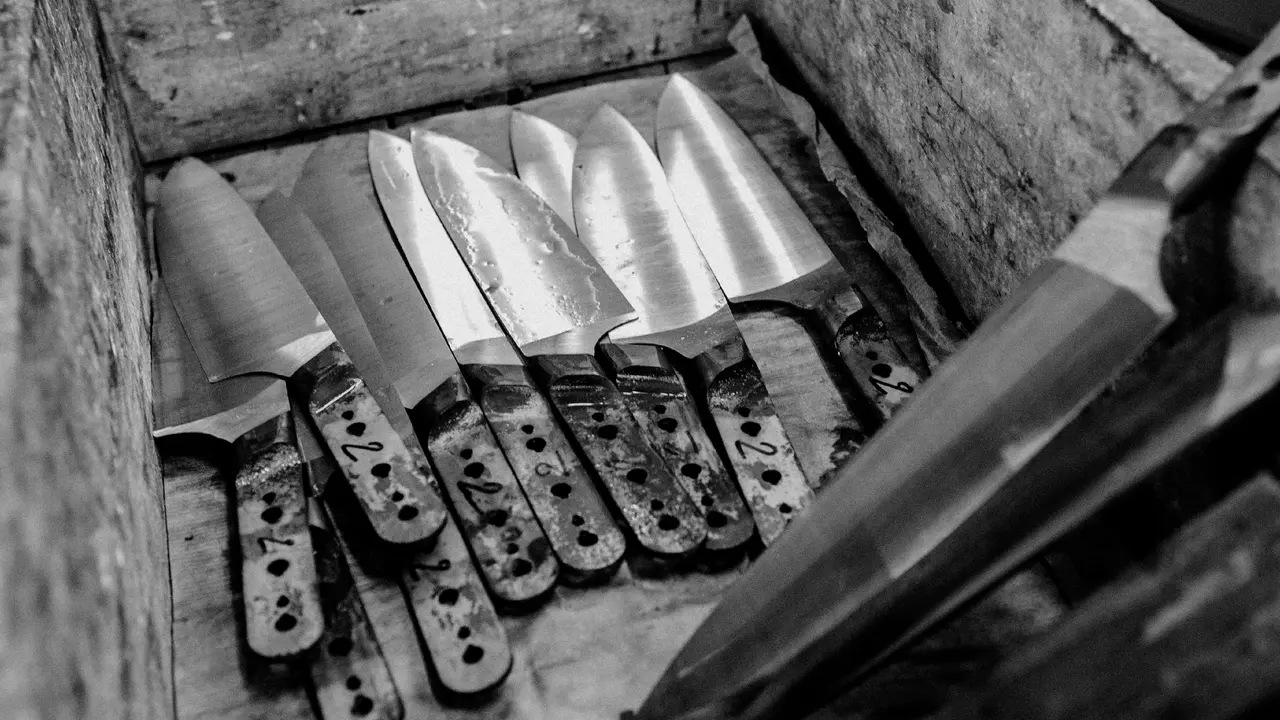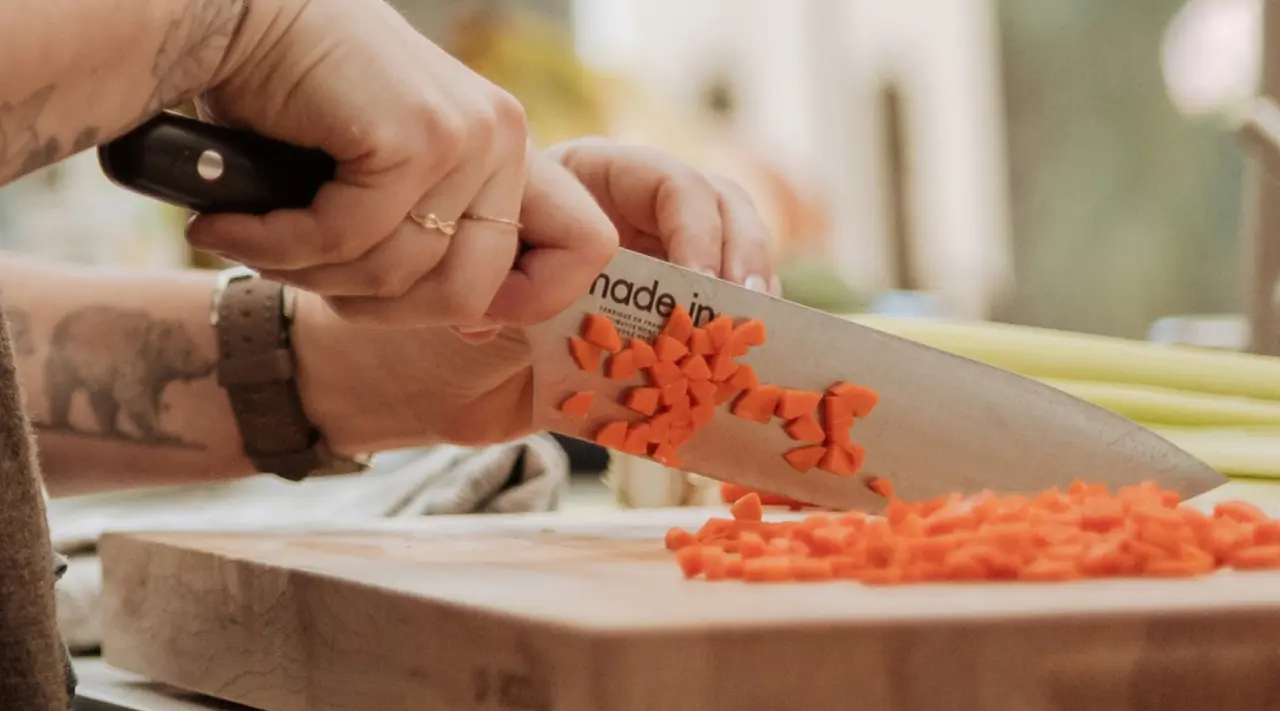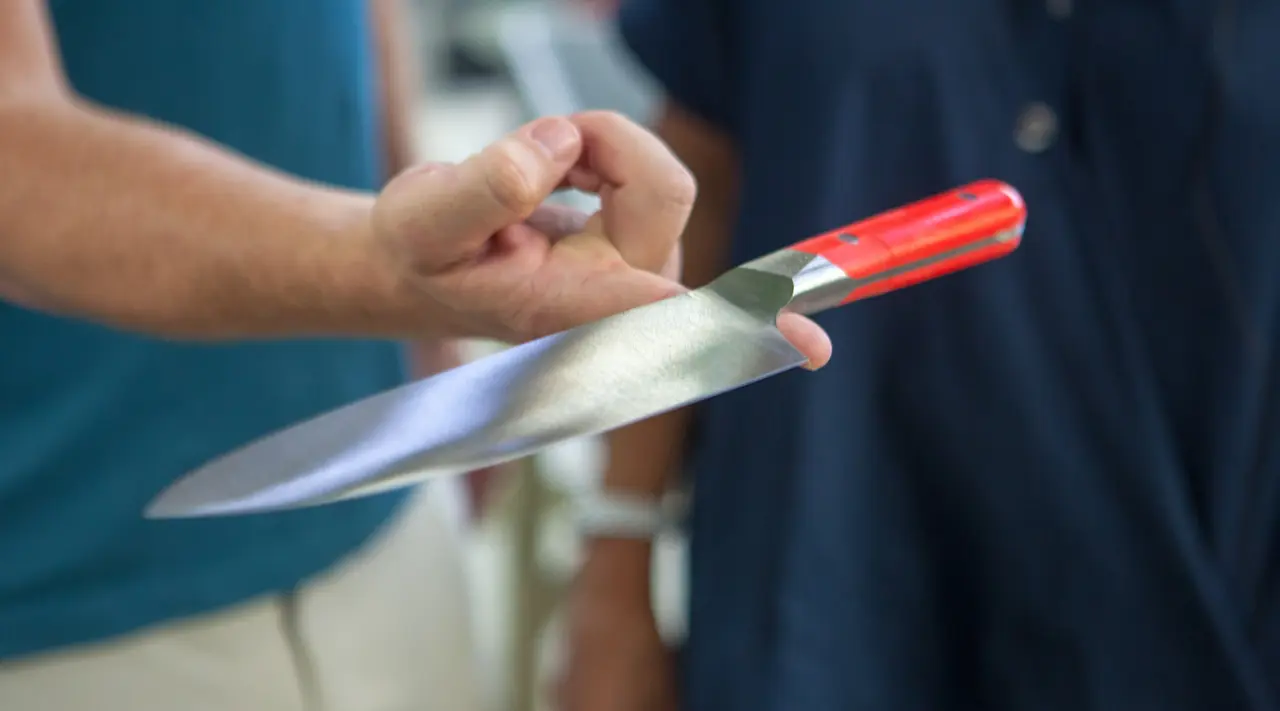If you’ve shopped for knives before, you’ve probably seen brands proudly advertise their knives as “fully forged,” meaning they’re constructed from a single rod of steel. When it comes to investing in any type of knife, we almost always recommend buying fully forged knives over the alternative, which is knives stamped from a single sheet of steel (also known as “stamped knives”). But what exactly is the difference? Moreover, how exactly does the forging process justify the higher price tag?
Read on for an in-depth look at the forging process itself and how it produces a stronger, more durable knife.
Understanding Forged Knives

A fully forged knife starts with a single rod of steel, which is then placed on a furnace until it’s red-hot and soft enough to be pounded flat. This pounding process, combined with additional steps like quenching and tempering (part of a multi-step process called “heat treating”), strengthens and hardens the metal of the knife.
The result is a knife composed of a single rod of steel that extends from the tip of the blade through the butt of the handle (check out our knife anatomy guide if you need some help here). This means you’ll have a well-balanced knife with no weak spots and a solid weight that feels comfortable in your hand. The bladesmith will also typically include a bolster—i.e.. a junction point that connects the blade to the handle—which helps to balance the weight of the handle with the weight of the blade.
Why Use Fully Forged Knives?

From balance to durability, here are some of the best reasons to invest in a fully forged knife.
Exceptional Balance and Weight Distribution
The process of heating and hammering a single rod of steel makes for a knife with a uniform weight throughout. Combined with a bolster and a full tang construction, forging makes for a knife with better balance and comfortable weight.
Powerful Cuts
A fully forged knife will typically offer the heft and sharpness necessary for making powerful and precise knife cuts without too much effort. This makes it easier to break down hard vegetables, for example, or to slice tougher cuts of meat.
Precision
Because the metal of a knife that’s been fully forged will be harder than a knife that isn’t, it can get—and stay—extremely sharp. This makes for quicker, more accurate cuts without needing to sharpen the blade as frequently (though we do recommend regular honing).
Stability
A fully forged knife will typically have a bolster connecting the blade to the handle, which helps to balance out the overall weight of the knife so it’s not too heavy in the blade or the handle. It can also make for an easier grip and more comfortable handfeel, and minimizes the risk of your hand getting nicked on the edge of the blade.
Strength and Durability
Firing, pounding, and heat-treating steel helps to reinforce the bonds in the metal, leading to a stronger, less brittle product overall. This strength makes for a less flexible, stronger blade that will hold its edge for longer.
Understanding Stamped Knives
A stamped knife is pretty much exactly what it sounds like: a knife whose blade has been cut or “stamped” from a large sheet of metal—much like using a cookie cutter to make shapes out of dough—rather than being hammered from a rod of steel. Many manufacturers prefer this method because it’s easy to automate, and requires less time and labor than forged knives.
Limitations of Stamped Knives
While stamped knives come with a small set of advantages—like light weight, lower price compared to forged knives, and increased flexibility—we feel that the considerations far outweigh the advantages.
Less Balanced
The lack of a bolster—plus the fact that stamped knives do not feature full tang construction—generally makes for a knife that’s less balanced throughout its length. This can make it unwieldy at best, and possibly even unsafe.
Lack of Bolster
While the forging process allows knifemakers to include a bolster when shaping the molten steel into a knife’s final shape, a stamped knife will never have a true bolster. This can add to the aforementioned lack of balance.
Reduced Durability
Because of the relative softness of unforged metal, stamped knives won’t hold an edge for as long as forged ones will—meaning that you’ll need to sharpen stamped knives much more often.
Forged vs. Stamped Knives: Which One Is Better?

While there are plenty of decent-quality stamped knives out there, we’ll pretty much always recommend a fully forged knife over a stamped one. Stamped knives tend to be less balanced and strong, making for a less long-lasting edge and a more cumbersome experience overall.
While the price can be a drawback for some, fully forged knives more than make up for the investment with their increased strength, balance, and ability to hold a sharp edge for longer, resulting in less maintenance and care required over time.
Ready to Shop?
Whether you’re shopping for your first kitchen knife or your tenth, any of our fully forged, full-tang Knives is an excellent place to start. Made in Thiers, France—aka, the knife-making capital of the world—these knives are precise, durable, and comfortable to hold, perfect for everyday tasks like prepping tons of restaurant-quality mise en place.






























